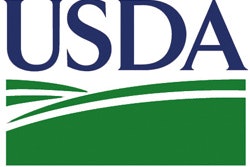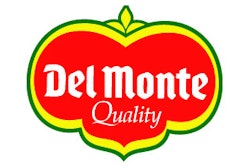This article originally ran in the November/December 2012 issue of Food Manufacturing.
How emerging food safety and quality assurance technologies save time, save money and create compliance efficiencies for food manufacturing operations
Over the past two decades, supply chain software solutions have become mainstream in food manufacturing operations because of the return on investment (ROI) they provided: they saved time, they saved money and they increased efficiencies. Today, we’re seeing a strong growth in web-based Food Safety & Quality Assurance (FSQA) solutions because of the same ROI: they save time, they can reduce the Cost of Goods Made and they create compliance efficiencies at all points — and for all participants — in the food manufacturing process.
There are two main categories of emerging FSQA technologies. One is Track and Trace — which focuses primarily on reaction — the ability to quickly trace ingredients and finished goods when a problem has been detected after the product has “left the building” and must be withdrawn or recalled. The second is Food Safety Chain Management, which focuses primarily on prevention — helping to prevent non-compliant materials and ingredients from coming in — and non-compliant finished goods from going out to prevent withdrawals, rejections and recalls before they happen. This article will focus on Food Safety Chain Management. The key concepts of Food Safety Chain Management center around the ability to automate online:
- Task scheduling and prompting to review Standard Operating Procedures (SOP), HACCP program monitoring and other tasks.
- FSQA test result and data collection — from an unlimited global supplier network — in realtime.
- Realtime analysis of all results against regulatory, non-regulatory and customer-driven specs and requirements.
- Realtime generation of Certificates of Analysis (COA) when results pass — or the automatic issuance of alerts to trigger corrective actions where required.
- Time and date stamping of all records and documentation.
- Performance trending against key performance indicators from a central repository of FSQA data.
Let’s look now at some “today and tomorrow” sample scenarios — by role — to demonstrate how Food Safety Chain Management streamlines the manufacturing process for better compliance and ROI.
Scenario 1 — Shipping and Receiving Manager:
It’s 5 a.m. at a food manufacturing plant that manufactures and sells retail cooked chicken in barbeque sauce. The receiving dock is waiting for a last-minute shipment of the sauce required for today’s production startup, which is scheduled to begin at 6 a.m. When the Shipping and Receiving Manager arrives at the loading dock the driver does not have a COA.
With Today's Manual Process
- Without the COA, the Shipping and Receiving Manager is unable to verify safety and quality attributes including pH, viscosity and microbiological analysis.
- He reaches the QA manager at home, who tells him not to unload the sauce without the COA.
- The purchasing department is called but they aren’t in yet, and the shipping and receiving manager gets voicemail.
- The QA Manager arrives onsite and cannot reach the sauce vendor; the 6 a.m. start-up time comes and goes.
- The line is on hold, labor is idle and the customer shipment will be delayed — all of which have an associated cost that will not be recovered and ultimately add a financial penalty to the bottom line.
With Food Safety Chain Management
- The COA would have been submitted electronically — by the supplier — prior to the truck leaving for the plant.
- The plant’s Food Safety Chain Management solution would have analyzed the COA against specifications in realtime.
- If the specs were compliant, an alert would have gone to the supplier to release the shipment and to the Shipping and Receiving Manager to accept the shipment upon arrival.
- If the ingredient attributes were non-compliant, a corrective action could have been taken at the supplier site or upon arrival (fixing viscosity, for example) — perhaps resulting in a supplier credit.
- In either case — all documentations and verifications are done in realtime, production can stay on or very close to schedule and product is shipped to customers on time.
Scenario 2 — Production Supervisor:
It’s 9 a.m. at a candy manufacturing facility — two hours since start-up. The workforce crew is on-station, equipment is running properly and 1,500 boxes have been produced — meeting production standards for output — when the Production Supervisor is paged by the QA Manager. He learns that the daily SOP to test or calibrate the line’s metal detector wasn’t completed prior to start-time due to the absence of a QA Technician.
With Today’s Manual Processes
- Because the metal detector is a HACCP Critical Control Point, an alternate QA Technician tests the metal detector, which is shown to be out of calibration.
- Not only does continuing production come to a halt, but the 1,500 boxes are put on hold to be re-run through a properly calibrated detector — all boxes will now have to be opened, and each candy bar will have to go through an off-line functioning calibrated metal detector, be re-boxed and re-labeled.
- Not only will this slow throughput to the distributor or customer, but the extra labor, replacement boxes and re-labeling costs increase the Cost of Goods Made — therefore negatively impacting the production process bottom line.
With Food Safety Chain Management
- Safety Chain Management solutions often provide the ability to schedule SOPs and other tasks and events associated with the manufacturing process with automatic prompts to the technician to complete the task. If the task is not completed and entered into the system on time, an alert is sent to the appropriate person(s) so that production doesn’t start until the task is completed.
- If the task was completed and a corrective action was taken — such as re-calibration — that will also be time and date stamped and documented.
- In this scenario production doesn’t come to a halt, there is no labor or cost associated with re-work and the Cost of Goods Made is kept within cost standards.
Scenario 3 — Operations Manager:
In a manufacturing plant that is slicing and packaging cheese, a Key Performance Indicator (KPI) for the Operations Manager, who is responsible for five production lines, is Cost of Goods Made. Every morning she reviews the production spreadsheets from the prior day’s operations. On this morning, she discovers that yesterday’s standard over-pack weight allowance of 0.5 percent has been exceeded on one of the lines — making the actual yield loss 1.1 percent — and adding $2,300 to the Cost of Goods Made for that line. Upon discussion with the QA Manager, she learns that the hourly samples for that line were within specification.
With Today’s Manual Processes
- With a manual process, the first thing that the Operations Manager will most likely do is go back and check to ensure that the spreadsheet information is accurate, and that there weren’t problems with the weighing equipment or errors with the data entry.
- If the equipment was working properly and the data is verified, the manager has to weigh (pardon the pun!) her options. A typical remedy for this type of problem is to increase sample frequency — which of course adds labor costs, as do most options.
With Food Safety Chain Management
- Most Food Safety Chain Management solutions are able to receive data from a wide variety of sources: from the field, sent by smart phones by pre-harvest inspectors, from internal or third party labs, and directly from equipment such as refrigeration and check-weighing machinery.
- In this scenario, because every unit is weighed, all that data would be automatically and electronically sent to the Food Safety Chain Management solution and compared to upper and lower control limits — making the sample “all” — every package on the line.
- Therefore, the minute a non-compliant weight trend is detected, an alert is issued and a corrective action can be taken.
- All of the data is also then time and date stamped and available on-demand to respond to a customer compliant or a government agency unannounced audit.
Scenario 4 — Plant Quality Assurance Manager:
The Plant Quality Assurance Manager for one of four preferred providers manufacturing and private labeling a proprietary salsa recipe for a major national fast food chain has just received notice that a recent shipment is being rejected at the customer’s distribution center due to two issues with the COA. One issue is an exception — the acidity level is outside the specification range. The second is an omission — a microbiological result for a pathogen is not on the COA.
With Today’s Manual Processes
- After performing a root cause analysis, the QA Manager determines both were caused by human error: the acidity range was actually correct but was entered with a typo — and the pathogen test was performed but wasn’t reported.
- The best case in this scenario is embarrassment and perhaps some loss of customer confidence. And it could have been much worse; if the ranges were incorrect or the test hadn’t been performed, the entire shipment would have been a loss and the inventory would have had to be replaced. If this happens too often, the preferred provider status would be at risk.
With Food Safety Chain Management
- Most Food Safety Chain Management solutions can manage an unlimited number of safety and quality specifications for multiple customers. In this case, the acidity range information would be electronically generated — avoiding human error. If the attribute was out of range, the issue would have been detected and corrected in realtime. The COA would not have been generated and the product would not have been shipped.
- Information can even be integrated with solutions such as the manufacturer's supply chain distribution system — preventing shipping documents from being printed when non-compliance is detected.
- In the case of the omission, Food Safety Chain Management systems can be configured to ensure all required fields are input prior to COA generation. And if the test results were non-compliant — again, the COA would not have been generated, and the salsa would not have been shipped. Even if there was cost associated with replacing the non-compliant salsa, the cost of packaging and shipping would have been avoided — along with the customer rejection.
- One could even argue that companies who deploy these types of solutions will have a better chance of receiving preferred provider status because of the greatly reduced risk of shipping non-compliant goods to customers.
Protect Market Value and Brand
On that last note, let’s summarize the key benefits that food manufacturers can realize from emerging Food Safety Chain Management technology innovations:
- Eliminate costly manual processes and errors — saving both time and money.
- Enforce regulatory, non-regulatory and customer-driven compliance through manufacturing efficiencies.
- Prevent withdrawals, rejections and recalls.
- And perhaps most important is the ability to Protect your market value and brand.
Barbara Levin is a frequent author and speaker on the strategic use of emerging technologies to execute on business initiatives. She can be reached at: [email protected]. Dan Bernkopf has spent more than 30 years as an innovator in the food safety and quality industry, with extensive front-line experience leading integrated safety and quality assurance initiatives as both a consultant to — and executive with — leading food producers and manufacturers. Dan can be reached at: [email protected].























